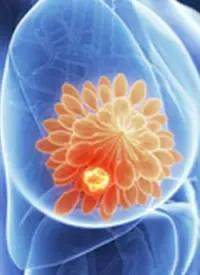News
Article
MammaPrint Predicts Likelihood of pCR With Neoadjuvant Chemo in HR+/HER2– Early Breast Cancer
Author(s):
Real-world data support the use of the MammaPrint index as a predictor of neoadjuvant chemosensitivity in patients with hormone receptor–positive, HER2-negative early-stage breast cancer.
MammaPrint in HR+/HER2– Early Breast
Cancer | Image Credit: © SciePro -
stock.adobe.com

Real-world data support the use of the MammaPrint (MP) index as a predictor of neoadjuvant chemosensitivity in patients with hormone receptor (HR)–positive, HER2-negative early-stage breast cancer, according to findings that were shared at the 2023 San Antonio Breast Cancer Symposium.1
Neoadjuvant chemotherapy produces low rates of pathologic complete response (pCR; ypT0/is ypN0) in patients with HR-positive, HER2-negative early-stage breast cancer (ESBC). The genomic MP test detects gene activity and classifies patients with breast cancer into high and low risk of cancer recurrence, as genomic signatures have potential to predict chemosensitivity and advanced treatment compared to standard clinical subtypes. In past trials, MP-determined high-risk subtypes tended to have higher pCR rates when using specific treatments.
“The real-world data demonstrate [that] MP and BluePrint [(BP) have] clinical utility to predict the likelihood of achieving pCR after neoadjuvant chemotherapy in HR-positive, HER2-negative ESBC,” the researchers stated in their poster presentation.
The observational FLEX trial (NCT03053193) consists of 12,328 patients, all with ESBC, who were tested by MP with or without BP. This study focuses on MP High 1 (H1) and High 2 (H2) statuses as biomarkers for neoadjuvant chemosensitivity within the patient population (patients with HR-positive, HER2-negative ESBC) who had been enrolled in the FLEX study (n = 214).
Within the study, MP identified 2 subtypes, H1 (n=142) and H2 (n = 72), in patients with ESBC. Characteristics such as age, menopausal status, race, tumor stage, and lymph node status were also analyzed.
MP, H1, H2, BP, and pCR were adjusted and analyzed through age, race, grade, T stage, N stage, and neoadjuvant chemotherapy regimen, according to findings from the study.
Fifty-nine percent of grade 3 tumors were categorized in the H2 tumor subgroup, and 98% of H1 tumors were Luminal B. Within the Luminal B (a type of breast cancer that responds to the hormone estrogen that also harbors the HER2 gene) subgroup, only 51% were H2 tumors and 49% were basal-type (an aggressive molecular subtype of breast cancer), according to BP.
The H2 tumor subgroup had a higher pCR rate, at 29.2%, in comparison with H1 tumors, at 6.3% (P < 0.01). Among the 35 patients within the basal-type H2 subgroup the pCR rate was 37.1% (P < 0.001).
“Although both MP high-risk groups exhibit chemosensitivity, High 2 tumors have higher chemosensitivity than High 1 tumors. Future studies will evaluate the correlation between neoadjuvant chemotherapy regimens (TC vs AC-T) pCR, and whole transcriptome changes to understand the underlying biology of treatment response,” the researchers noted.
Within BP Luminal B tumors, patients with MP H2 tumors had a higher pCR rate (21.6%) compared with those who had MP H1 tumors (5.8%; P = 0.03). MP H2 (OR, 4.91; P = 0.003) and BP Basal-Type (OR, 3.54; P = 0.03) tumors were also associated with a chance of pCR.1
“Response to neoadjuvant immunotherapy is currently being evaluated in patients with HR-positive, HER2-negative, stage II to III, MP High 2 breast cancer in the SWOG 2206 trial [NCT06058377] that is open to accrual,” the researchers said.
Reference
O'Shaughnessy J, Pusztai L, Graham C, etl al. MammaPrint index predicts neoadjuvant chemosensitivity in patients with HR+HER2- early-stage breast cancer in the real-world evidence FLEX study. Presented at: San Antonio Breast Cancer Conference; December 5-9, 2023; San Antonio, TX. Abstract: PO5-15-04.







